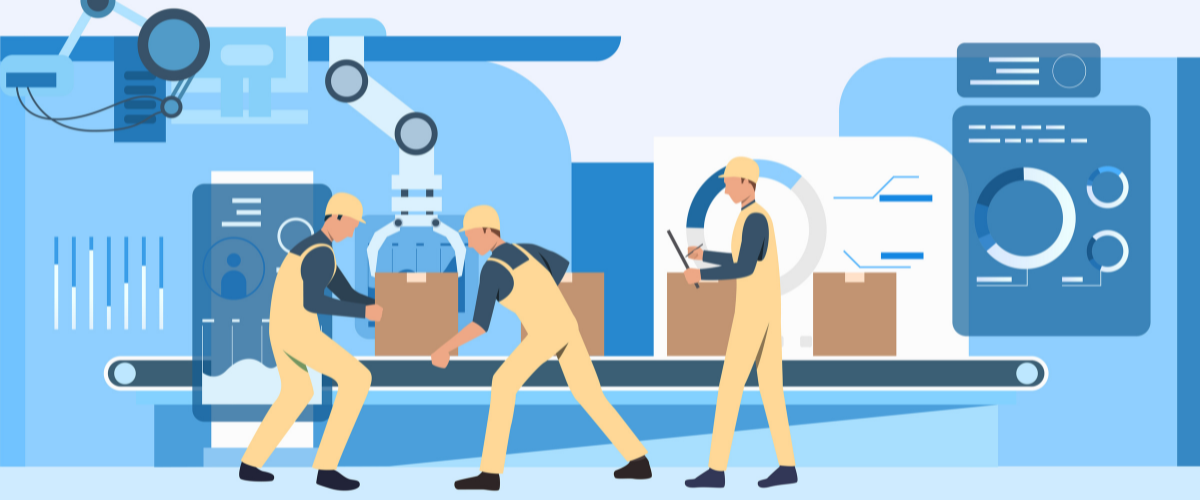8 challenges faced by the manufacturing industry
Over the last decade, the development of many groundbreaking methods has led to more flexible, energy-efficient, and environmentally sustainable manufacturing processes. In addition, manufacturing has evolved due to advances in the supply chain, economies, consumer needs, and engineering design. Manufacturing today is also capital-intensive and automated, with a highly skilled and trained workforce. Data and product innovation also play significant roles in the industry.
But modern manufacturing is still grappling with Taylorism principles, which seek to strike a balance between humans and machines in terms of productivity and manufacturing economics, which aims to reduce per-unit production costs. Modern manufacturing is at the heart of global development, from raw materials to semi-finished goods and finished goods.
Still today, with growing numbers of path-breaking innovation and technologies, some fundamental challenges remain unsolved.
Challenges faced by the manufacturing industry:

1. Demand Forecasting
Despite substantial advancements in demand forecasting and information technology, most businesses struggle to incorporate inventory levels into their production planning procedures. Most of the time, the necessity of choosing the right forecasting approach is ignored, and forecasting is blamed.
Many factories are still having trouble anticipating future demand today. The biggest issue is that they lack effective monitoring systems that would allow them to forecast how many goods they should sell in the coming months or years. As a result, their products fall short of client expectations and reduce sales.
2. Inventory Management
Inventory management remains one of the most critical challenges faced by the manufacturing industry, but it has become much easier with the help of automated solutions. Nonetheless, many manufacturers, tiny ones, continue to handle their inventories manually.
The use of software can cut down time-consuming tasks such as Inventory management. Manual stock checks are inefficient and prone to errors, resulting in mistakes, shortages, excess, and unidentified losses. Organizations are under a lot of pressure to deliver consistently high-quality goods that meet the needs of their customers. However, if a manufacturer has trouble keeping track of inventory, it could result in shortages and various other issues.

3. Improving Manufacturing Plant Efficiency
Manufacturers have been looking for practical solutions to reduce costs and increase efficiency at their factories up until now. Many of them prefer to cut production costs by reducing product quality, but this will only decrease their profitability since dissatisfied customers will stop buying. It’s all about revolutions in manufacturing. Every step in the process, every input and output, changes from raw materials to the completed product and progresses. Companies must make a genuine commitment to excellence looking around at all the essential information to increase quality.
4. Wastage of material
Waste is a regrettable but unavoidable element of any process manufacturing production cycle, frequently due to poor planning or recipe or formula changes. To avoid financial losses, prevent high overhead, and improve overall efficiency, a process manufacturer’s primary value is to limit the amount of material wasted.
 5. Keeping Track of Sales Lead
5. Keeping Track of Sales Lead
Another problem that companies commonly experience is managing and evaluating sales leads. Many of them handle their leads the same way; however, this isn’t the right strategy. Because each sales lead is unique in terms of persona, preferences, and requirements, they must be treated specifically.
Manufacturers also often find it challenging to identify potential leads, so they often focus on unpromising opportunities and forget to follow up with high potential leads.
6.Shortage of Skilled Labor
Although automation and robotics can help close the labour gap, humans will still be required to assess and solve problems and manage out. Moreover, the industrial industry is suffering a staffing shortfall as the baby boomer generation prepares to retire. It is one of the most severe dangers to the manufacturing industry today.
7. Adapting to Technological Changes
Due to the systems and technology that currently support the business and how organizations sell their products or give services to their consumers, innovating and implementing developing technology is practically required for any company, regardless of its segment of activity.

The actual factors that blocker emerging tech adoption within companies
- The company’s culture and its workers’ resistance
- The leadership team’s lack of support
- A lack of clarity or a project that is incredibly complex
- A lack of governance and transparency in the reporting of results
- There is a lack of cooperation between teams.
- There aren’t any processes or procedures in place.
- Forcing adoption or insufficient adoption speed
- The discrepancy between “acquiring technology” and “adoption of technology.”
8. Environmental Consciousness
Consumers today are more ecologically concerned than ever before, and they want the same degree of commitment from the brands they buy from. Process manufacturers, particularly those who work with chemicals, must be aware of the environmental impact of their materials and actively seek out ways to reduce emissions and produce green goods.
Conclusion
Manufacturing is a thriving and resourceful sector of the economy well-positioned to produce growth in globalized markets, benefiting the entire economy. The manufacturing industry includes everything from large companies, primarily multinational conglomerates, to small enterprises that provide niche goods and services.
Individual businesses have their success strategies and paths; this diversity is a source of both strength and resilience. However, due to the wide range of company types and innovations covered, few panaceas can be used to stimulate potential development across the entire manufacturing industry.
To know more about the challenges faced by the manufacturing industry and solutions that can solve these problems, follow us on LinkedIn or Contact us.





